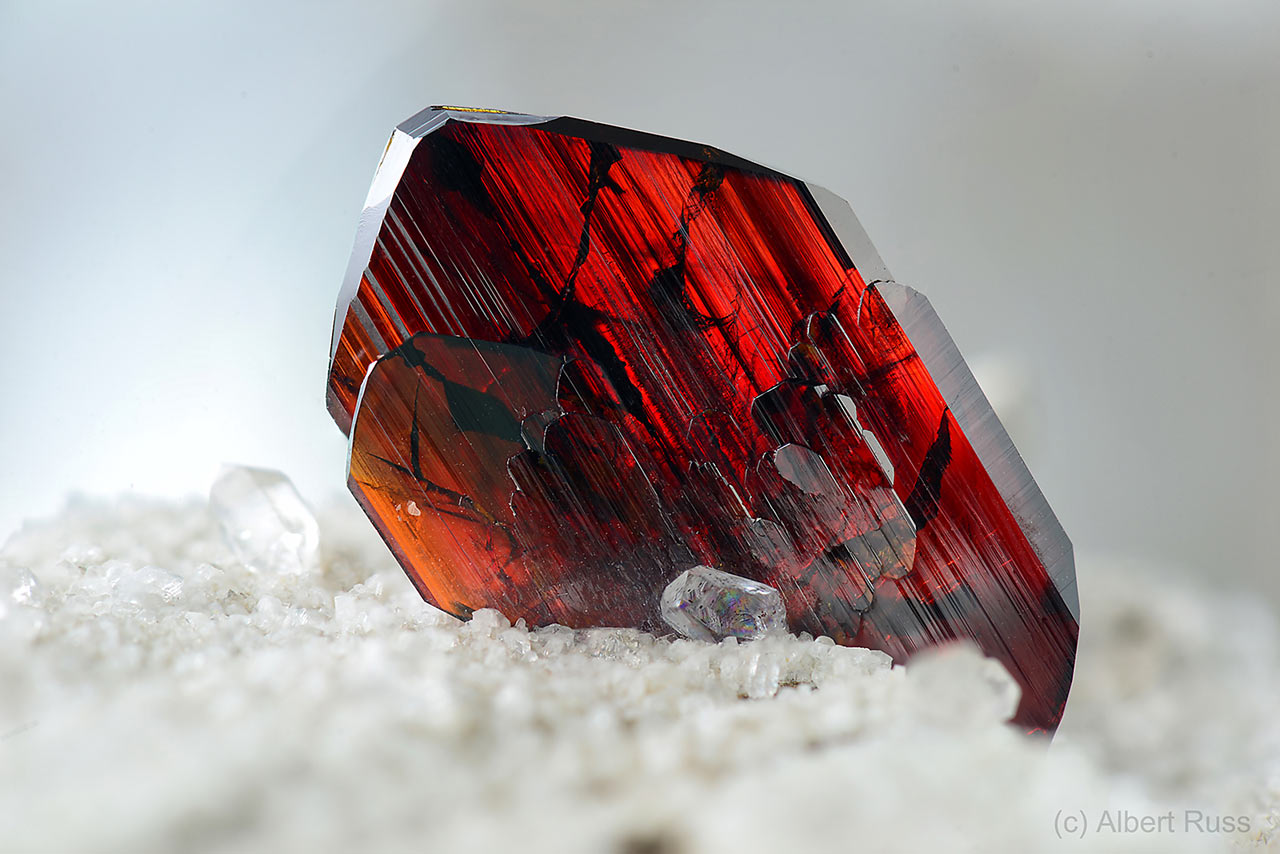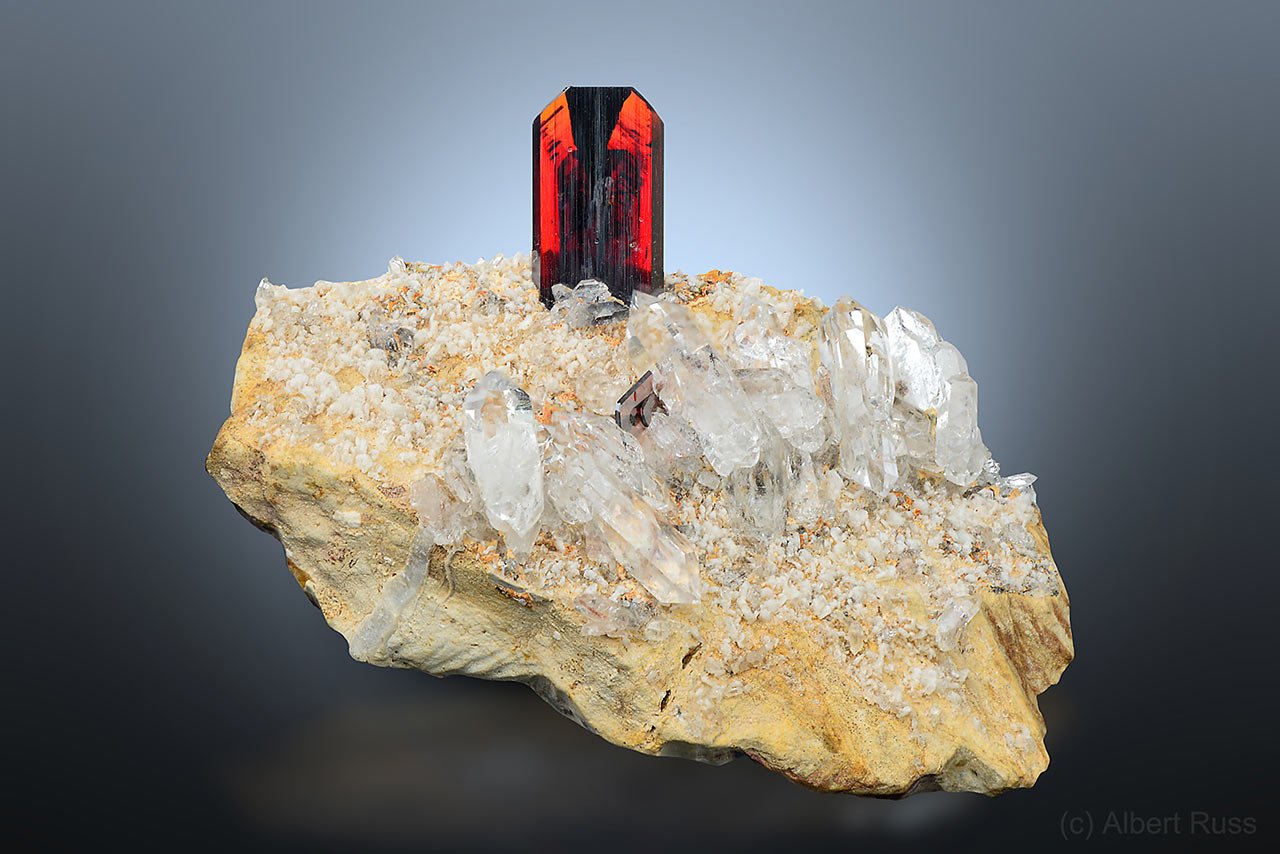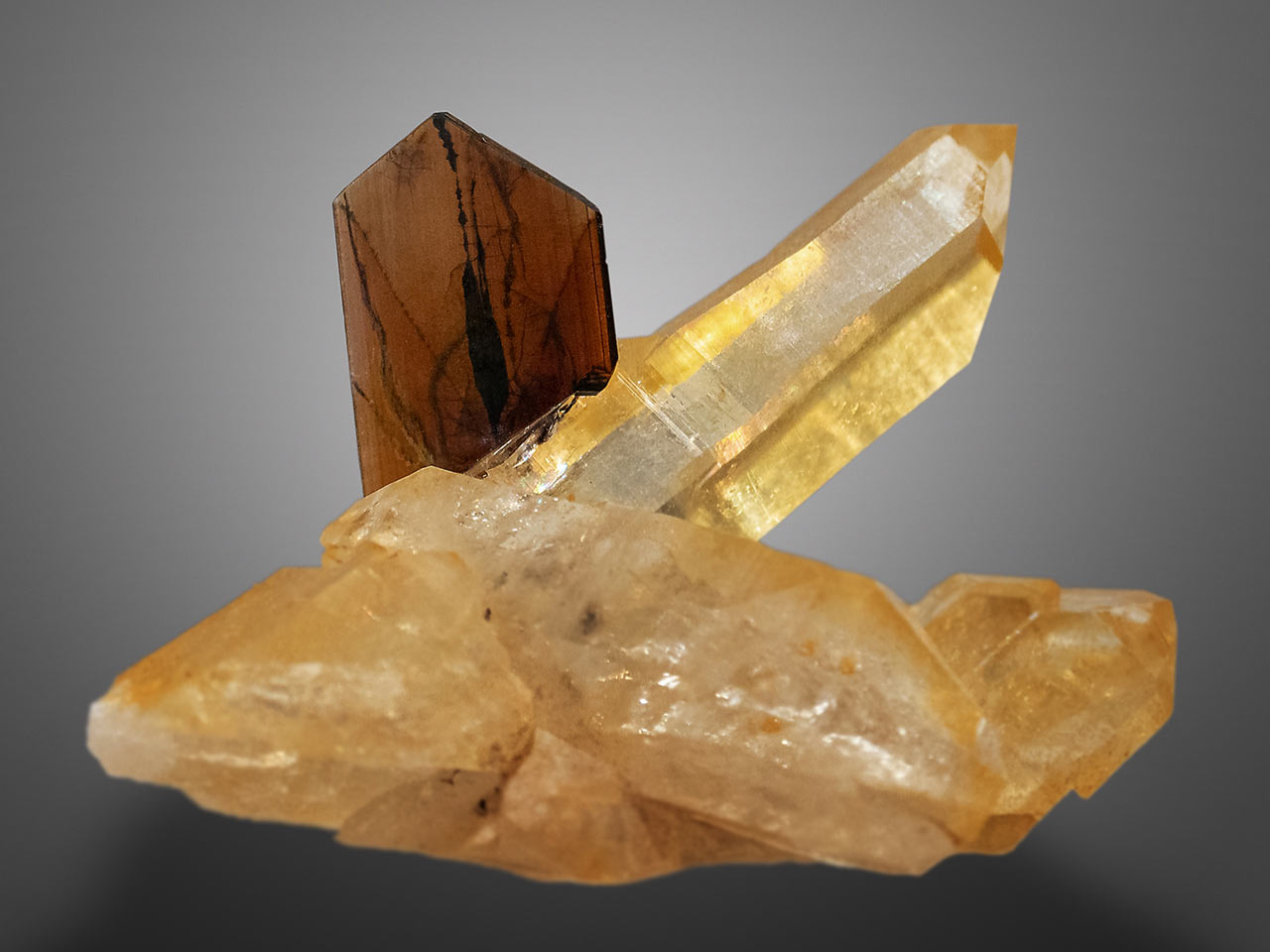Brookite - Mineral Properties, Photos and Occurence
Brookite is a rare and highly aesthetic mineral of the alpine clefts. It is a titanium dioxide polymorph with only limited industrial use, but it is a very popular collector’s item.
Crystal Structure of Brookite
Brookite chemical formula is TiO2 (titanium dioxide) and it crystallizes in the orthorhombic mineral system. Crystals are tabular or striated, pyramidal or pseudohexagonal with pointed terminations. Other examples are stubby, equant, bladed or platy. Unlike most other minerals, brookite always forms crystals and never occurs in aggregates or compact masses. Crystal twinning is weakly observed on {120}.

Brookite structure is constructed from octahedral cells, with a titanium ion at the center and oxygen ions distributed at each of the 6 vertices. Brookite structure often contains some iron (Fe) substituting Ti, which changes its color to darker. Other common impurities include tantalum (Ta) and niobium (Nb). Brookite inverts to rutile above 750° C.
Physical Properties of Brookite
Brookite is ordinarily deep red, reddish-brown, yellowish-brown, brown or black. Less often, it is light yellow-gray to almost white. It is opaque, translucent or transparent, with adamantine to submetallic luster. Brookite exhibits weak pleochroism in shades of yellow, red or orange-brown. Crystals sometimes display color zoning, perhaps with a dark central stripe. Brookite has extremely high index of refraction (R.I. 2.6-2.7).
Brookite hardness is 5.5-6.0 and its brittle, with a subconchoidal to irregular fracture. Brookite streak is white, grayish or yellowish; and its density is 4.08-4.18. Cleavage is poor on {120} and {001}.

Titanium Dioxide Polymorphs
Brookite is one of five IMA approved polymorphs of titanium dioxide (TiO2). Two more high-pressure polymorphs exist and are not yet approved as valid minerals. Each polymorph has the same chemical composition, belonging to a different crystal system with different cell volumes:
- Brookite, orthorhombic, with 8 TiO2 groups per unit cell
- Anatase, tetragonal, with 4 TiO2 groups per unit cell.
- Rutile, tetragonal, with 2 TiO2 groups per unit cell.
- Akaogiite, monoclinic, a high-pressure polymorph known from the Nordlinger Ries Crater in Germany.
- Riesite, monoclinic, a high-pressure polymorph also known from the Nordlinger Ries Crater in Germany.
Alternative Names
A local variant of brookite known as arkansite has been identified in both Magnet Cove, Arkansas (US) and Murunskii Massif (Siberia, Russia).

Naming and Discovery
A French mineralogist, Armand Levy, named brookite in 1825 after Henry James Brooke (1771-1857), an English crystallographer, mineralogist and wool merchant. Throughout a lifetime involved in Spanish wool commerce, South American mining and developing insurance products, Brooke was a serious hobbyist in mineralogy and is credited with the discovery of 12 new mineral species. He amassed a large collection of shells and minerals, donating all of them to the University of Cambridge.
Brookite Origin
Brookite specimens are typical for alpine clefts in various types of schist and gneiss. Brookite in the alpine clefts is very often associated with quartz, albite, rutile, anatase, and titanite. Less common is formation of brookite by hydrothermal alteration. It can also occur in placers because of its high density.

Applications
Just as there are no important historical uses for rutile, there are virtually none for brookite. In the modern world, the titanium extracted from rutile is used to create refractory ceramics and to harden steel. Brookite and anatase are the accessory minerals that accompany commercial beach sediment deposits of rutile. See the rutile overview for more details.
Extracted brookite itself is not directly used. All TiO2 forms (rutile, brookite, anatase) mined from the sediments are first thermally converted to pure rutile and then further processed. Small part is converted back to synthetic brookite, which is used in special paints and as anti-corrosive and biocompatible coatings on orthopedic implants.
Occurrence of Brookite
The type locality locality for brookite is Twll Maen Grisial, Fron Olau, Prenteg, Gwynedd, Wales, UK.
However, later much better specimes were recovered in the Alps: Classic and high quality brookites come from Bourg d’Oisans, Isére, France and from Maderanertal and Intschitobel, Kanton Uri, Switzerland. Less famous Alpine localities include Monte Bregaceto, near Genoa, Liguria, Italy; Le Trient and Salvan, Kanton Wallis (Valais), Switzerland; and vicinity of Pragraten and Virgen, Tirol, Austria. Outside Alps, alpine clefts with superb anatase and much less common brookite are found in Hardangervidda, Norway.

Great brookite crystals were found in the Dodo and Puiva Mines, Subpolar Ural Mountains, Russia. Other Russian localities include Southern Ural Mountains and Atliansk, near Mias, Ilmen Mountains.
Classic US localities include Magnet Cove, Hot Spring County, Arkansas; Ellensville, Ulster County, New York; and Powderhorn, Gunnison County, Colorado.
Top quality specimens of the last decade come from Khârân District in the Balochistan province, Pakistan. However, be extremely cautious when buying, many of these are glued to the matrix and there is a very high risk of buying completely faked specimen.





Comments